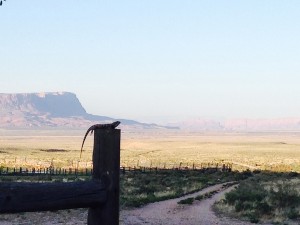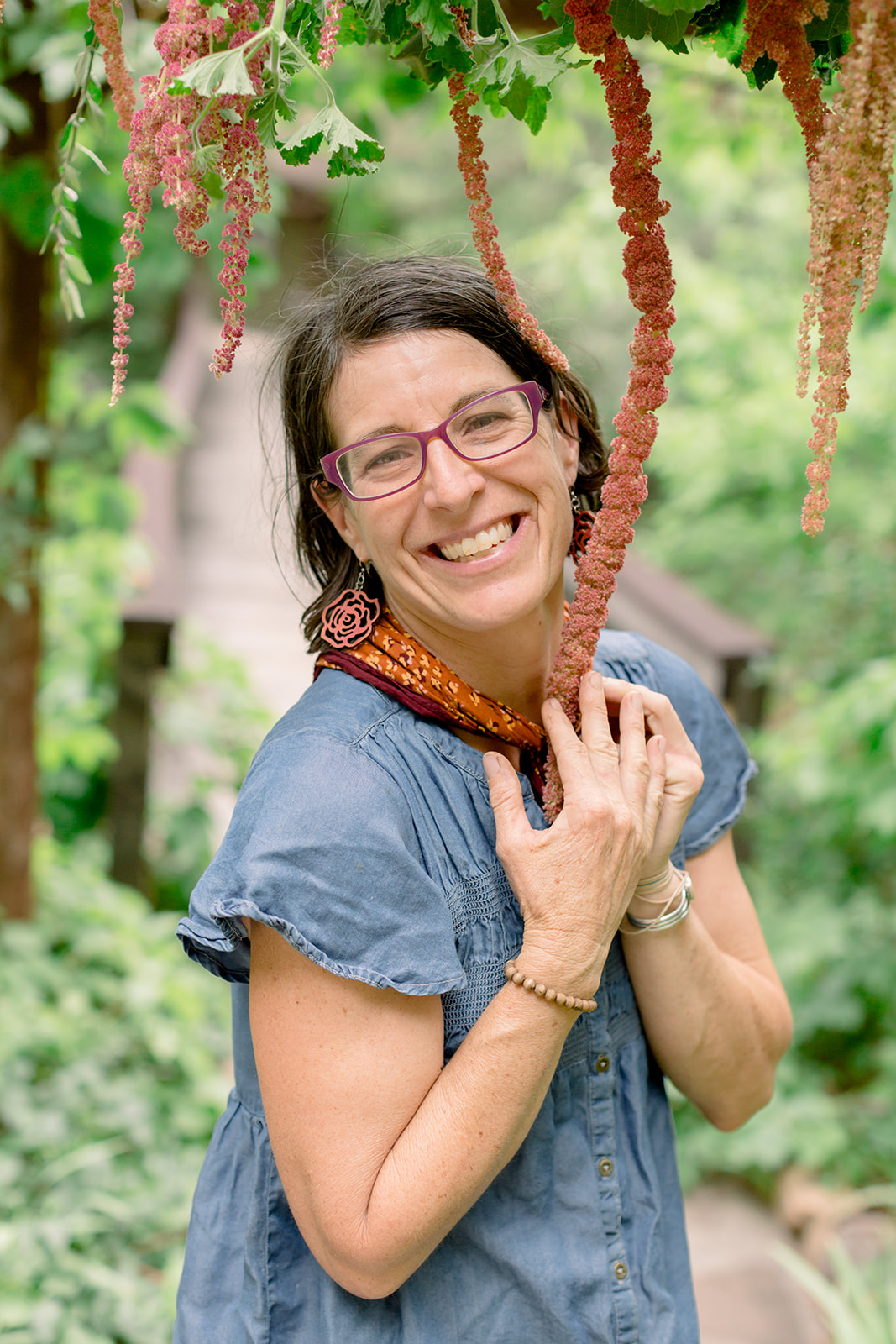 It is a leisurely spring evening on the Kane Ranch front porch and the doves are moaning away in a chorus of mournful harmonies. But there is nothing sorrowful about the golden hour in Marble Canyon. The horizon is a wide, panoramic expanse stretching for miles. Here you can look and look and fill your head with the possibility of anything. A desert spiny lizard that looks like he might be at the top of his wrestling league languishes on the corner fence post, soaking up the magic.
It is a leisurely spring evening on the Kane Ranch front porch and the doves are moaning away in a chorus of mournful harmonies. But there is nothing sorrowful about the golden hour in Marble Canyon. The horizon is a wide, panoramic expanse stretching for miles. Here you can look and look and fill your head with the possibility of anything. A desert spiny lizard that looks like he might be at the top of his wrestling league languishes on the corner fence post, soaking up the magic.
Fellow Homer Jean Rukkila provides percussive accompaniment for the doves and the wind with her typewriter. It is a Saver’s special with the $7.99 price tag still prominently displayed on the fashionable carrying case. This sound of keys tapping provides me with a strange yet familiar comfort. Jean is typing up the homework assignments for our upcoming journaling retreat. Tomorrow, 15 Grand Canyon Trust members all earnestly summoning words and images to their blank pages will arrive and this place will be alive with making.
 Out of nowhere, a gust of wind smacked Jean’s (not that lightweight) typewriter off of her tiny folding table. It tumbled off the porch into the rock garden planter and was stopped by a hefty penstemon plant in full, ecstatic bud. Upon investigating the damage, only the r and x keys were compromised, with a corner dent and a few scratches for battle scars—but it still makes words. Certainly a character-building incident in the life of Jean’s typewriter, but it made me wonder about its past life before traveling between Forest Service lookout towers.
Out of nowhere, a gust of wind smacked Jean’s (not that lightweight) typewriter off of her tiny folding table. It tumbled off the porch into the rock garden planter and was stopped by a hefty penstemon plant in full, ecstatic bud. Upon investigating the damage, only the r and x keys were compromised, with a corner dent and a few scratches for battle scars—but it still makes words. Certainly a character-building incident in the life of Jean’s typewriter, but it made me wonder about its past life before traveling between Forest Service lookout towers.
I started craving my own typewriter after that. I wanted that satisfaction of punching keys; my Mac laptop is just so square and quiet and requires electricity. Typewriters are seductive in their features—the letters encircled in the rounded keys, the simple metal parts, the slightly imperfect typeface that lets your mistakes made in the moment of creation shine.
I learned to type on a typewriter in high school at the tail end of the home economics era, and I remember the orchestra of keys tapping in that room full of 15 teenagers chugging away at their assignments. Later in college I lived in Brazil for a year and I typed letters home to my family on tissue-thin airmail stationary about the details of my life researching the lives of rural women workers. A typewriter was my only instrument to write my final paper. So I’m not just romantic about it. My fingers also remember how to make words with those keys.
My mother was a secretary in the 1960s in New York City. She graduated from Katherine Gibbs secretarial school and then worked at Columbia University for the Jesuit college. I wonder how much typewriter music is buried in my subconscious from living in her belly during that time.
So I went in search of a typewriter while on a road trip with my sister to Silver City, N.M. The downtown has a stretch of historic storefronts that beckon you to wander in, with ample thrift stores and antique shops.
We strolled into each shop with purpose and asked if they had any working typewriters. This subject was a conversation starter. Everyone likes to tell their story about how their computer stopped working or the printer failed and the typewriter saved the day. I found that people were eager to help me find the breadcrumbs along my path. We enlisted an older couple in the search when they overheard me asking in earnest. It is funny how when you are looking for something and you speak it out loud, there is a momentum that arrives and shuttles this desire to the next stop on its journey to fulfillment. They urged us to check out the corner antique mall. The shopkeeper toured us around a high-ceilinged old building teaming with remnants from other lifetimes, but alas, the models he had were not quite right—too new, too old or too expensive.
We encountered the couple again on the other side of the street a little later and they tipped us off to another typewriter sighting. Sure enough it is one that fits my vision—a 1960s Royal with a steel gray metal body and charcoal round keys with creamy letters. It was nestled in an old case locked down on metal tracks to be ported along on adventures—an early version of my laptop. The tag says, “Used by a reporter in Vietnam,” a very effective marketing strategy, because I immediately want to be part of that story. I want to feel the spirit of urgency in those keys and tap into the moments shared by other writers who felt the call to the blank page.
Last night I typed my first letter to a friend. I like the satisfying, clear ding that signals the edge of the margin and the animal instinct that returns to me. I feel the sureness of the words that come, much like the immediacy of pen to paper. I feel a universal connection to the other lives that have enlisted this tool for correspondence, poetry and to document the world, including my own.
Kate Watters is a botanist, restoration practitioner, backcountry cook, community organizer, artist and musician. She spent 10 years living and working in the Grand Canyon building trails and leading plant research and restoration projects for the Park Service. She is the co-author of River and Desert Plants of the Grand Canyon. Kate currently leads stewardship and outreach efforts for the Grand Canyon Trust.

